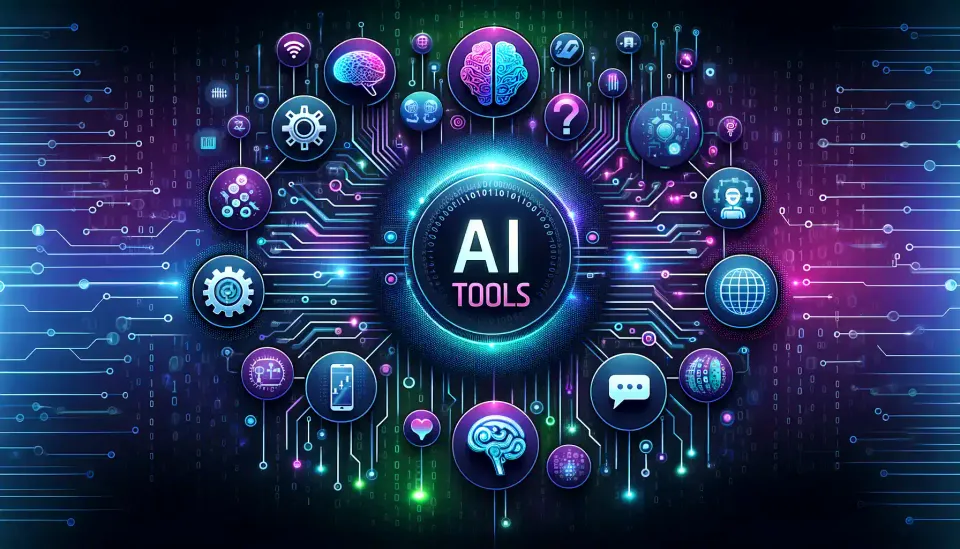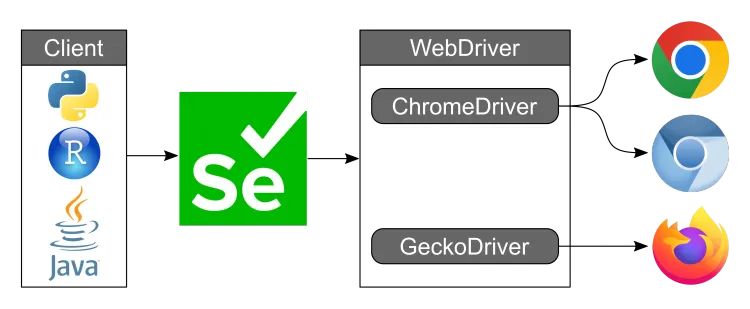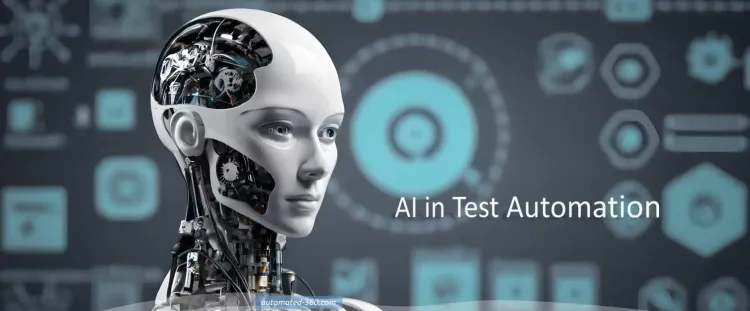Comparing the Best AI Test Tools for Software QA

As software development cycles become quicker and faster, it becomes more difficult to deliver a high-quality release. Traditional testing approaches fail in many cases; they work, but for modern applications, they don't scale with the pace and complexity. This is where AI test tools are becoming more impactful in the area of Software Quality Assurance (QA).
These tools utilize ML, predictive analytics, and automation to improve speed, accuracy, and efficiency in software testing. Some tools use automation a step further than mere scripted automation.
Rather than simply execute scripts, the tools can actually learn from historical test data, learn to adapt from application changes, and even develop test cases automatically. With features like self-healing scripts, intelligent defect detection, sophisticated reporting, etc., AI testing is becoming the new norm for QA.
However, with so many options available, it can be difficult for a user to identify the best AI test tool. Since each tool has its different abilities, focuses, alternatives, and pricing schedules, it is very important to compare all options to ensure the best and most informed decision is made.
In this article, we will compare the best AI test tools available today, their offering, strengths, weaknesses, and optimal use cases. This will assist testers in finding the right tool to successfully and systematically fulfill their software QA requirements.
An Overview of AI Test Tools
AI testing tools are revolutionizing software testing by introducing intelligent automation to the QA process. These tools use artificial intelligence or machine learning rather than standardized test automation frameworks to allow teams to optimize the way they create, run, and maintain test coverage. Testers can assess the behavior of the application, understand risk areas, and even automatically update a test script if the UI changes, therefore, eliminating the time and effort associated with manual updates.
These tools add test coverage through intelligent test generation, providing the highest probability of revealing defects. Many AI-based test tools have seamless integration with CI/CD pipelines for continuous testing in agile or DevOps environments. QA teams are attempting to keep pace with faster release cycles and larger, more complex software ecosystems. AI test tools have become a necessity for delivering quality software quickly and reliably.
Benefits of Using AI in Software QA
AI-enabled software quality assurance incorporates speed, intelligence, and flexibility into a team's approach to testing software. Below are the key benefits:
Faster and Smarter Test Automation: AI-driven testing software substantially shortens the time to author tests and execute them. Auto-generate test cases from user behaviors or changes in code automatically, allowing teams to test more, with better quality, at speed in development cycles.
Self-Healing Test Scripts: One of the biggest issues with traditional automation is maintaining scripts when a UI change occurs. AI-enabled test tools can identify changes and adjust the test scripts automatically, meaning much less manual work.
Improved Test Coverage: AI algorithms can analyze risk, code complexity, and historical data to prioritize and recommend test scenarios to discover faults through improving testing coverage and ultimately improving software quality.
Enhanced Defect Detection: Machine learning models can also learn and detect patterns in faults and user behavior to identify subtle bugs that manual or scripted testing may miss, improving detection rates and reducing false positives.
Continuous Testing and Integration Support: AI-enabled test tools can easily operate in CI/CD pipelines with unlimited cycles of testing to deliver continuous testing cycles and operate within each release of development. This leads to earlier bug detection, faster feedback loops, and more stable releases.
Comparing the Best AI Testing Tools for Software QA
Selecting the best AI testing tool means that the testing team evaluates distinct and specific requirements, skill level, and the complexity of their applications. The developers will also take into account the ease of use, integration with other tools, and the platform supported.
LambdaTest
LambdaTest is an AI-native test orchestration and execution platform to effectively scale manual and automated tests. The platform gives developers and testers the power to automate web and mobile applications in real time over more than 3000 environments and real mobile devices.
Key Features
- AI-Powered Smart Test Execution: Uses AI to rank testing according to risk and application changes, reducing test run times and targeting the most essential areas of the application.
- Parallel Test Execution and CI/CD Integration: Test allows testers to perform parallel testing at scale and be integrated with CI/CD tools such as Jenkins, GitHub Actions, Bitbucket, and GitLab for automating continuous delivery.
- Visual and Screenshot Testing: Test supports automated visual UI testing, as well as screenshot comparisons across multiple browsers to rapidly identify layout issues.
LambdaTest also comes with GenAI test assistant - KaneAI.
KaneAI, developed by LambdaTest, is a pioneering GenAI-native testing assistant designed to revolutionize quality assurance. The GenAI native platform allows users to create, manage, and evolve tests through natural language, with no extensive coding competencies required.
LambdaTest offers a powerful cloud-based platform that enables developers and testers to efficiently evaluate the accessibility of their web applications across a vast range of real browsers and devices. It stands out among accessibility testing tools by helping ensure your digital content is usable and compliant with standards like WCAG and ADA.
Virtuoso
Virtuoso is an AI test automation platform that is focused on autonomous testing using natural language scripting and advanced self-healing features. It emphasizes live authoring, allowing the user to run tests simultaneously, while its self-healing elements adapt to changes in the application under test automatically.
Key Features
- AI-Powered Self-Healing Tests: Virtuoso’s artificial intelligence means that whenever UI elements change, the relevant test steps will be updated automatically, saving significant amounts of time in test maintenance.
- Live Authority and Real-Time Debugging: Tests can be created and executed directly in the browser, allowing testers instantaneous feedback, validation, and debugging as they create tests.
- Cross-Browser and API Testing: Virtuoso allows automated tests to be executed on different browsers, has native API testing capabilities, and allows for end-to-end test coverage.
Challenges
- Limited Mobile Testing Capabilities: Virtuoso is very useful for testing websites and APIs, and not having mobile capabilities could be a disadvantage for teams that require complete mobile automation.
- Complex Conditional Logic Requires Workarounds: If the workflow has complex decisions/conditions or looping logic, the user may encounter restrictions and need to find workarounds.
- Initial Setup and Configuration Overhead: While there is some initial overhead to set up projects, organize element locators, and define flows, this may require more effort for teams updating from code-based tools.
ACCELQ
ACCELQ is a test automation and test management platform powered by AI, using the cloud to provide end-to-end testing for web, mobile, API, and desktop applications. ACCLEQ is known for its innovative codeless automation, allowing test practitioners to create, build, and execute test cases without writing code, using a syntax in natural English-like language. The platform uses AI and machine learning to enable self-healing tests, intelligent element recognition, as well as impact-based test planning, greatly reducing test maintenance and providing speed.
Key Features
- Codeless Test Automation: ACCELQ allows users to create automated tests using a visual interface. Eliminating the need for programming skills. This approach allows for a faster test development process and eases collaboration across multifunctional teams.
- Unified Test Management: ACCELQ provides a central platform for managing test cases, executing, and reporting across many different applications. Including mobile, web, API, and desktop.
Challenges
- Complex Scenario Handling: While ACCLEQ excels in codeless automation, handling highly complex or unique test scenarios may require additional customization or workaround strategies.
- Performance with Large Test Suites: Managing and executing extensive test suites may impact performance, requiring optimization to maintain efficiency.
Conclusion
In conclusion, with software development cycles accelerating and complexity continuing to rise, the challenge of implementing the right AI test tools in software QA to achieve quality, reliable applications can become increasingly difficult.
The AI testing tools laid out above have numerous benefits, such as self-healing tests, natural language scripting, intelligent test orchestration, CI/CD integration, and more. These benefits improve test coverage, reduce feedback-loop time, and facilitate Agile and DevOps.
Each tool has its benefits; some moved towards cross-browser and real-device testing, while others concentrated on codeless automation or advanced analytics.
With the right mix of AI-driven capabilities and scalable technology, testers get the benefit of faster releases and fewer bugs with a more accessible and user-friendly website.



